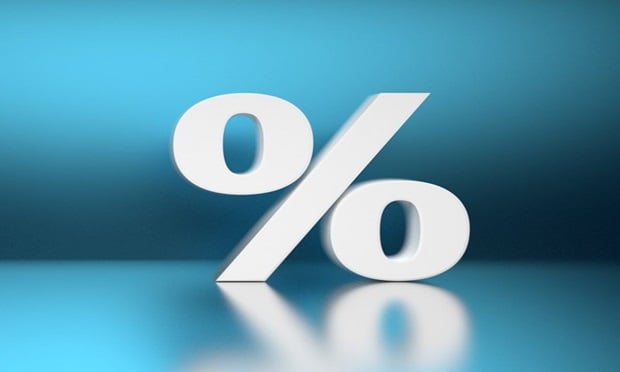In the first half of 2010, we have seen a significant increase in the number of investment property sales in New York City. I understand, from speaking with many of you across the country, that this trend is being seen elsewhere and, while perhaps it is not as sharp and increase as in New York, the trends are positive nonetheless.
In all of 2009, 1436 properties were sold in the Big Apple and, in the first half of 2010 (1H10), there were 818 buildings sold. The dollar volume of sales also increased significantly, going from $6.26 billion in all of 2009 to $6.49 billion in 1H10.
The projected annualized increase in the number of buildings sold is 14% while the annualized dollar volume increase is projected to be 131%. These figures illustrate two very tangible dynamics. The first, and most obvious, is that activity is picking up significantly and, the second is that the average sale price of transactions is increasing sharply. The average sales price of a New York City transaction in 1H10 reached $7.9 million, up from $4.4 million last year.
We believe that, although we have seen very significant volume increases thus far in 2010 from 2009 levels, the activity will pick up even more dramatically during the second half of the year as several important factors come into play.
The first of these factors involves distressed assets. We are seeing distressed properties and notes coming to market in much greater frequency as lenders and special servicers look to take advantage of current market conditions. As I have written about frequently on StreetWise, current demand substantially outweighs supply leading to achievable pricing that is surprising (to the upside) many market participants. Lenders and servicers have been noticing the recovery possible on these sales which is proving to be compelling.
Additionally, the Fed’s highly accommodative monetary policy has allowed for a massive recapitalization of the banking industry over the past two years. The profitability these banks have enjoyed is affording them the ability to absorb losses incurred due to the disposition of distressed assets. Many have indicated a desire and/or a need to clean up balance sheet problems by the end of 2010. We believe that we will see increasing activity with respect to REO and note sales as this balance sheet cleanup occurs and the necessary deleveraging process occurs.
The second factor revolves around the interest rate environment. Rates hover around record lows as the Fed is keeping them there to help stimulate the economy. Trouble in Europe has created a flight to safety and quality which has exerted significant downward pressure on Treasury rates. The 5-year has been well below 2% for weeks and the 10-year has been below three for a good part of that period. This is keeping commercial lending rates down, which, in turn, is keeping capitalization rates down and prices up. As economic indicators are weak and not responding they way anyone would like them to, it would appear that the Fed will keep rates low in the short to medium term, unless of course, indicators dramatically improve. This low interest rate/high value dynamic is luring both distressed and discretionary sellers alike.
The third factor involves tax policy. We are seeing significant activity from discretionary sellers who are concerned that capital gains tax increases in 2011 will create a disadvantageous selling environment. We have received dozens of exclusive listings over the past few months from discretionary sellers who are desirous of beating the capital gains tax increase.
If you do not believe that tax policy impacts private sector decision making, look no further than the dreaded New York State capital gains tax (the “Cuomo Tax”) increase implemented in the Empire State in the 1980’s. This tax was an additional 10% tax on top of the existing capital gains tax on any property sale over $1,000,000. Then Governor, Mario Cuomo, felt that this tax on “rich real estate investors” would raise needed revenue for the state. Transaction volume slowed to a crawl during this period. Ironically, when the tax was eliminated, the tax dollars collected actually increased as transaction volume exploded.
If we examine history, it is not surprising that we are seeing this activity in anticipation of a tax increase. In 1981, when Ronald Reagan announced tax cuts, which would become effective in 1983, economic activity ground to a halt in anticipation of a more tax-friendly environment. Today, the reverse is true and, as they anticipate a less friendly tax environment next year, investors will be rushing to get transactions done this year.
These factors will increase the supply of properties for sale which will increase transaction volume across the board. Demand exceeds supply to such an extent that this additional supply should not impact value in a negative way…..at least for the rest of 2010. We, therefore, believe that we will see significant sales volume increases in the third, and particularly the fourth quarters of 2010.
The balance of this year should be very strong for the investment sales business. How things proceed from there will be dependent upon many things. I will keep you posted.
Mr. Knakal is the Chairman and Founding Partner of Massey Knakal Realty Services in New York City and has sold over 1,075 properties in his career having a market value in excess of $6.5 billion.
Want to continue reading?
Become a Free ALM Digital Reader.
Once you are an ALM Digital Member, you’ll receive:
- Breaking commercial real estate news and analysis, on-site and via our newsletters and custom alerts
- Educational webcasts, white papers, and ebooks from industry thought leaders
- Critical coverage of the property casualty insurance and financial advisory markets on our other ALM sites, PropertyCasualty360 and ThinkAdvisor
Already have an account? Sign In Now
*May exclude premium content© 2025 ALM Global, LLC, All Rights Reserved. Request academic re-use from www.copyright.com. All other uses, submit a request to [email protected]. For more information visit Asset & Logo Licensing.








